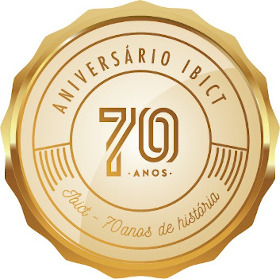Studies in Scientometrics I Transience and Continuance in Scientific Authorship
DOI:
https://doi.org/10.18225/ci.inf.v4i1.64Abstract
Estuda o fenômeno de transiência/permanência na frente de pesquisa pela análise do fluxo anual de autores de uma população amostrada derivada do banco de dados resultante de sete anos de publicação de "Science Citation Index" e "Who is publishing in Science". Para o período total analisado (1964-1970) foram encontrados 281 autores transientes e 19 autores permanentes, numa população total de 506 autores. Derivou-se, a seguir, um modelo para análise quantitativa do fluxo padrão de autores, verificando-se que há uma taxa de natalidade ("annual recruitment") e uma taxa de mortalidade ("annual terminatio") de cuja superposição resulta uma taxa de mortalidade infantil (transiência). O modelo final permite definir a existência de um núcleo de autores altamente permanentes, correspondente a 20% da população. Os autores transientes constituem 22% da população anual e 2/3 dos autores novos ("newcomers"). Foram ainda identificadas outras categorias de autores na comunidade científica. Há uma clara correlação entre estas propriedades demográficas e as taxas (maior e menor) de produtividade dos autores, cuja distribuição é consistente com as leis de Lotka e Price. Isto permite derivar a expectativa de permanência na frente de pesquisa, que será proporcional ao tempo ativo de publicação. Temos de um lado da escala, a maioria dos autores com uma expectativa de vida mínima e taxa de produtividade baixa (75% dos autores produzindo 25% dos trabalhos); no lado oposto estão os autores do núcleo permanente (20%), com menor taxa de mortalidade e maior taxa de produtividade (mais que a metade dos trabalhos). Esta situação é resultante de um feedback positivo ou efeito Matthew — e parece ser tão intrínseca que, tudo leva a crer, nossa sociedade deve atingir de modo a adaptar sua estrutura institucional à feição da produtividade e demografia científicas.
Abstract
Investigation of the transience / continuance phenomenon occurring at a research front. The annual output of authors in a random sample derived from seven years data from Science Citation Index and Who is publishing in Science was analysed. In the whole period (1964-1970) there are 281 transient authors and 19 continuant authors, for a total population of 506 authors. By deriving a quantitative model for the author flow pattern analysis, it was shown that there is a birth rate (annual recruitment) and a death rate (annual termination) which overlap to give an infant mortality (transience). By refining the model, it was possible to define a core of continuant authors, which amounts to 20% of those publishing. The transient authors constitute 22% of the annual population and 2/3 of the newcomers to publication. The other identified components of a scientific community are the recruits, terminators, non-core publishing continuants and non-publishing continuants. These demographic properties are clearly associated with the lowest and highest rates of authors' productivity, the distributions of which folkw Lotka's and Price's laws with great regularity. Thus it was possible to derive a lifetime expectancy at the research front which will be proportional to the time of active publication. On one end of the scale there is a majority of authors with a minimum life expectancy and a low average productivity (75% of the authors produce 25% of the papers); at the opposite extreme there are authors in the permanent nucleus (20%) with less average mortality and greater average productivity (more than half of the papers) All this is a result of the positive feedback or Mathew Principle in scientific publication. This situation seems so intrinsic that it must be regarded at the way in which society has adjusted its institutional structure to fit the cloth of scientific productivity and demography.Downloads
Downloads
Issue
Section
License
- This publication reserves the right to modify the original, regarding norms, spelling and grammar, in order to maintain the standards of the language, still respecting author writing style;
- The final proofs will not be sent to the authors;
- Published works become Ciência da Informação's property, their second partial or full print being subject to expressed authorization by IBICT's Director;
- The original source of publicaton must be provided at all times;
- The authors are solely responsible fo the views expressed within the article;
- Each author will receive two hard copies of the issue, if made availalbe in print.




























